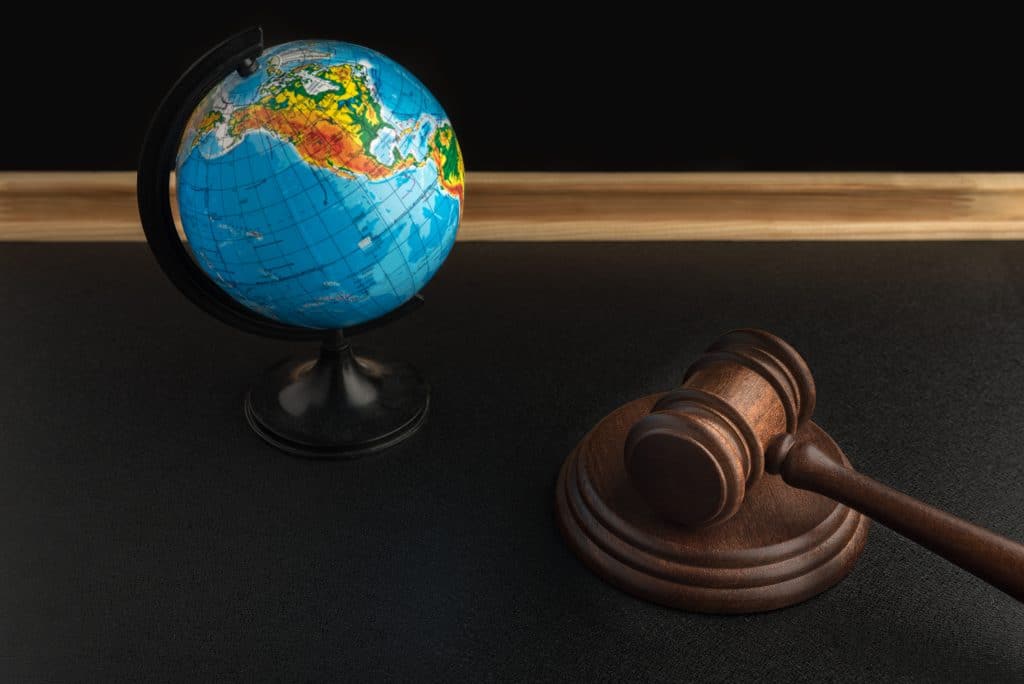AI deepfake legislation: what you need to know


In today’s rapidly evolving digital landscape, AI deepfake legislation has become a critical topic of discussion.
As artificial intelligence enables the creation of hyper-realistic manipulated media, governments worldwide are racing to develop laws that address these challenges.
Understanding how AI deepfake legislation is shaping to combat misinformation, protect privacy, and secure public trust is essential for everyone navigating this tech-driven era.
Understanding deepfakes and their impact
To grasp the importance of AI deepfake legislation, it’s crucial to first understand what deepfakes are and why their influence is far-reaching.
Deepfakes use sophisticated artificial intelligence techniques to create altered videos and audio that appear genuine.
This technology blurs the line between reality and fabrication, posing serious risks for individuals and society.
What are deepfakes?
Deepfakes employ AI algorithms to seamlessly replace or modify faces and voices in digital media. This makes it possible to fabricate content that can convincingly portray people saying or doing things they never actually did.
The rapid spread of such content, especially via social media, magnifies its impact.
Examples of Deepfakes Include:
- Celebrity impersonations in videos that seem authentic.
- Fabricated news segments designed to mislead viewers.
- Manipulated political footage aimed at influencing public opinion.
These examples illustrate the complex challenge of distinguishing entertainment or satire from malicious misinformation. As deepfake creation tools become more accessible, the risk of misuse escalates exponentially.
Impact on privacy and security
The consequences of unchecked deepfake proliferation are significant. Privacy violations occur when individuals’ likenesses are used without consent, often in damaging ways.
On a larger scale, deepfakes threaten national security by enabling the spread of disinformation that can destabilize societies or interfere with democratic processes.
Because of these profound implications, AI deepfake legislation is vital to establish ethical boundaries and enforce accountability.
Collaborative efforts across technology, law, and public education are necessary to maintain trust in digital media ecosystems.
Current state of AI deepfake legislation
Governments are actively crafting and updating laws to address the challenges posed by deepfakes. The landscape of AI deepfake legislation is dynamic, reflecting the need for timely and effective responses to evolving technology.
Legislation Across the Globe
- United States: Various states have enacted laws targeting malicious deepfakes, particularly those related to election interference and non-consensual pornography. These laws criminalize harmful content and aim to protect individuals’ rights and the integrity of the electoral process.
- European Union: The EU’s proposed Digital Services Act is a landmark effort incorporating stringent regulations on digital platforms. It mandates transparency about AI-generated content, enforces accountability for hosting harmful deepfakes, and introduces penalties for malicious creators. The Act underscores the balance between fostering innovation and protecting democratic values.
Key measures include:
- Mandatory disclosure of AI-manipulated content on platforms.
- Increased transparency requirements for AI-generated media.
- Stricter sanctions against creators and distributors of harmful deepfakes.
Challenges in Enforcement
Despite these legislative advances, enforcement remains complicated. The rapid pace of AI innovation often outstrips regulatory frameworks, making timely prosecution difficult.
The internet’s anonymity further complicates efforts to identify perpetrators. Additionally, inconsistent definitions of what qualifies as a deepfake or malicious intent create legal ambiguities.
Effective enforcement demands ongoing collaboration between lawmakers, AI experts, and platform operators to adapt regulations to emerging threats.
Challenges in regulating deepfakes

The challenges in regulating deepfakes present significant obstacles for lawmakers and society. As the technology advances, maintaining effective controls becomes increasingly difficult. Legislators face the daunting task of creating laws that can keep pace with rapid technological changes.
Defining deepfakes
One major challenge is defining what constitutes a deepfake. The term can cover a broad range of manipulated media, from harmless parody to harmful misinformation.
This lack of clear definition can hinder the enforcement of regulations and allow malicious content to slip through the cracks.
Identification and verification
Identifying deepfakes can also be difficult. As these technologies improve, even experts struggle to distinguish between real and fake content.
This issue complicates both legal actions and the work of platforms trying to regulate the material they host.
- The increasing sophistication of deepfake technology.
- Difficulty in training detection algorithms.
- Variability in presentation styles of deepfakes.
Moreover, the fast-evolving nature of artificial intelligence makes it challenging for regulations to remain relevant. What is illegal today may be adapted for legitimate use tomorrow, creating gray areas in the law.
Enforcement issues
Enforcing laws on deepfake technology is another hurdle. Many deepfakes are created and shared anonymously, making it hard to trace the source. This anonymity emboldens malicious creators who exploit deepfake technology for their benefit.
Additionally, laws must strike a balance between protecting against misuse and preserving freedom of expression. Policymakers must navigate the fine line between regulation and censorship to avoid infringing on individual rights.
The role of technology in enforcement
Technology itself is a powerful ally in enforcing AI deepfake legislation. Advanced detection tools and AI-driven monitoring systems help platforms and authorities combat the spread of harmful content more effectively.
Detection tools
One of the most significant advancements is in the field of deepfake detection technology. Companies and researchers are creating algorithms that can analyze videos and identify signs of manipulation.
These tools can help platforms quickly flag suspicious content.
AI-driven monitoring
AI-driven monitoring systems are essential for tracking the spread of deepfakes across the internet. These systems use machine learning to scan vast amounts of data and detect anomalies in video and audio files.
- Automated systems can flag potential deepfakes for review.
- Real-time detection helps limit the spread of harmful content.
- Monitoring tools assist law enforcement in tracking down perpetrators.
Moreover, technology plays a role in educating users and stakeholders about the dangers of deepfakes. Awareness campaigns use interactive tools and resources to inform the public about how to recognize manipulated content.
Collaboration with tech companies
Collaboration between governments and tech companies can enhance the enforcement of deepfake regulations. By sharing data and insights, they can develop more effective solutions to combat misuse.
For example, social media platforms can implement content moderation systems that utilize deepfake detection technology.
As the battle against deepfakes continues, leveraging technology will be vital. The ongoing fight against misinformation relies on keeping ahead of the technological curve while ensuring users are educated and informed.
Future trends in AI regulations
Future trends in AI regulations are crucial as technology continues to advance rapidly.
Policymakers are realizing the need to address the implications of new artificial intelligence technologies, including deepfakes, to protect society while fostering innovation.
Increased global cooperation
One significant trend is the push for increased global cooperation in regulating AI. As technology knows no borders, countries are beginning to collaborate on creating international standards.
This will help ensure that AI development and deployment are ethical and responsible.
Focus on data privacy
Another important aspect will be a stronger focus on data privacy. Regulations will likely evolve to provide individuals with better protection against data misuse.
Expect to see laws that require more transparency about how personal information is handled, especially in AI systems.
- More stringent rules on data collection and consent.
- Greater accountability for companies that misuse data.
- Enhanced rights for individuals regarding their data.
The integration of ethical guidelines into AI regulations will also become more common. Policymakers are recognizing the importance of building fairness and transparency into AI systems.
This includes preventing bias in AI algorithms and ensuring that outputs are reasonable and justifiable.
Emphasis on technology development
Additionally, there may be a stronger emphasis on the development of AI technologies that prioritize safety and security.
This could lead to frameworks that require testing and validation of AI systems before they can be used in critical areas like healthcare, finance, and public safety.
As we look to the future, the landscape of AI regulations will continue to shift.
Adapting to challenges presented by technologies like deepfakes will require ongoing dialogue among stakeholders, including tech companies, regulators, and the public.
By working together, we can create a framework that encourages innovation while safeguarding society.
Global perspectives on deepfake laws

Examining global perspectives on deepfake laws reveals a patchwork of regulations and approaches. Different countries are recognizing the urgent need to address the challenges posed by deepfakes, but their responses vary significantly.
United States approach
In the United States, legislation is primarily at the state level. Some states have enacted laws to combat malicious deepfakes, focusing on electoral integrity and personal privacy.
These laws target deepfakes used to deceive voters or harm individuals, establishing criminal penalties for such actions.
European Union regulations
The European Union takes a more comprehensive approach. The proposed Digital Services Act aims to regulate digital platforms and includes provisions targeting deepfakes.
This legislation emphasizes the removal of harmful content while ensuring accountability for tech companies.
- Mandatory content moderation practices.
- Enhanced transparency for AI-generated content.
- Legal responsibilities for misinformation.
Countries are also looking to implement ethical standards in AI technology, helping to guide future legislation.
The discussions in the EU suggest a more unified approach to dealing with deepfakes, focusing on protecting individual rights and promoting safe digital environments.
Asian perspectives
In Asia, countries like China and Japan are experimenting with their regulations. China, for instance, has introduced guidelines that require deepfake content platform operators to register their users and submit IDs.
This measure aims to foster accountability among those creating and sharing content.
Japan, on the other hand, has not yet implemented specific deepfake laws, but discussions about regulating AI technology are ongoing. This indicates a growing recognition of potential risks associated with deepfakes.
In conclusion, the issue of deepfake legislation is becoming more urgent as technology advances. Countries around the world are taking different approaches to regulate deepfakes, reflecting the complexities of this challenge.
As we navigate the tricky waters of AI development, it is clear that cooperation among nations, combined with innovative technology, will be vital for creating effective and fair regulations.
The future of deepfake laws will rely on ongoing dialogues and efforts to balance safety with technological growth.
The emergence of AI deepfake legislation marks a critical step in addressing the challenges of manipulated digital media.
As the technology evolves, so must the laws and tools designed to protect privacy, prevent misinformation, and uphold democratic values. The path forward demands a balanced approach—one that fosters innovation while ensuring accountability.
By embracing technological advancements in detection and monitoring, fostering global cooperation, and implementing clear ethical frameworks, society can mitigate the risks posed by deepfakes without stifling creativity or free speech.
For an in-depth analysis of the evolving legal landscape and its implications, see this New York Times article on deepfake laws and free speech.
FAQ – Frequently Asked Questions About AI Deepfake Legislation
What are deepfakes?
Deepfakes are media that have been manipulated using artificial intelligence to create realistic fake videos or audio.
Why is regulating deepfakes important?
Regulating deepfakes is crucial to prevent misinformation, protect privacy, and maintain trust in digital media.
How are different countries approaching deepfake laws?
Countries vary in their approaches, with some creating specific laws while others use broader regulations addressing AI technology.
What role does technology play in enforcing deepfake legislation?
Technology aids in detecting deepfakes and monitoring their spread, which helps enforce regulations more effectively.
Liked the article?





